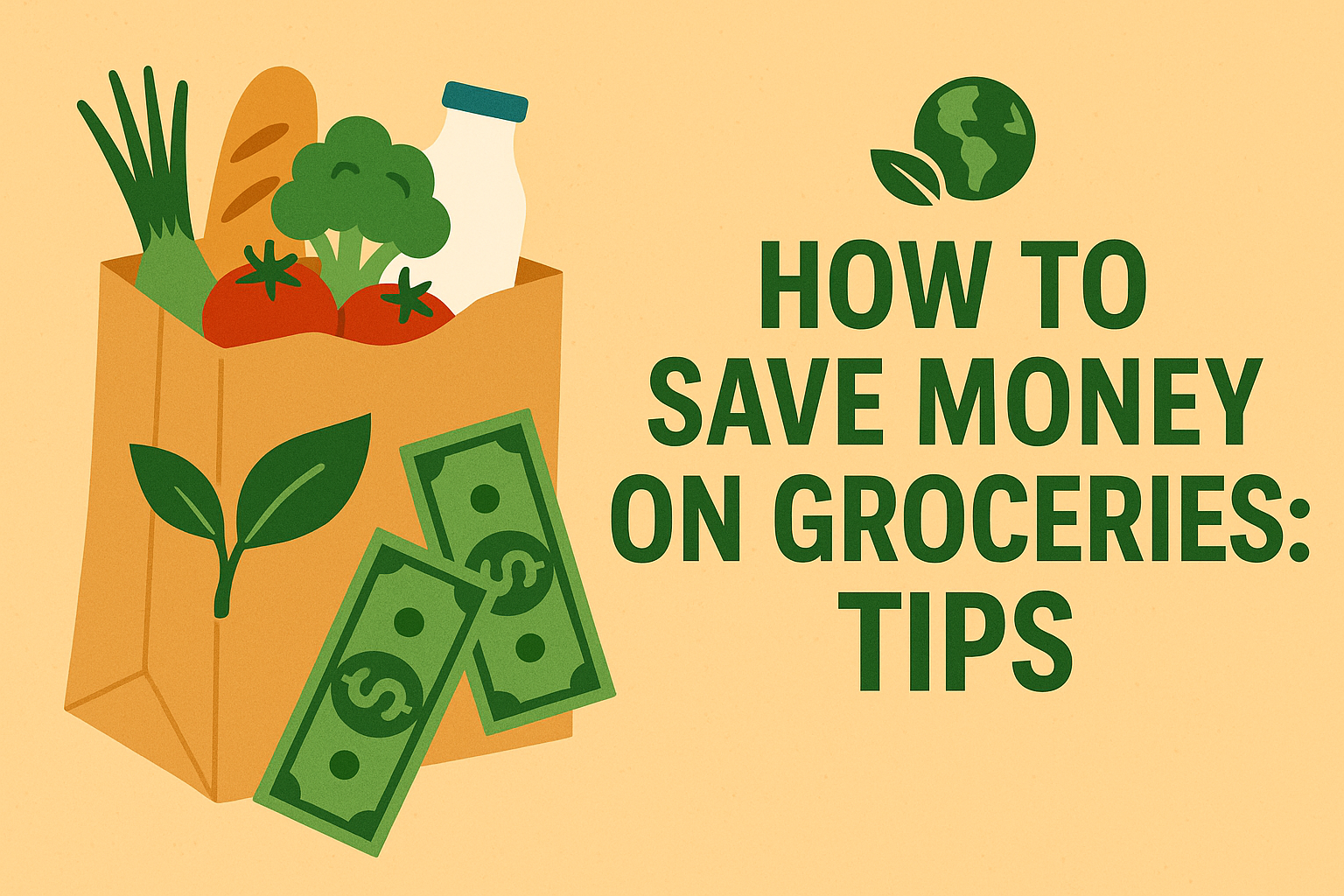Rising Food Costs Are Hitting Families Hard
Food inflation has become one of the biggest household budget challenges in 2025. According to the USDA, grocery prices rose nearly 3% over the past year, with essentials like eggs, dairy, and produce seeing some of the steepest increases. For the average American household, that means spending over $7,000 per year on food—much of it going straight into the trash due to waste.
But there’s good news: with a few smart strategies, families can cut costs by 20–40% while also making more eco-friendly choices. Here’s how to get started.

1. Plan Meals and Make a List
Meal planning is the cornerstone of grocery savings. Families who take just 15 minutes each week to map out dinners (and repurpose leftovers) save both money and time.
- Why it works: Planning eliminates impulse buys and ensures every ingredient has a purpose.
- Eco angle: Reduces food waste—one of the largest contributors to greenhouse gas emissions.
💡 Pro Tip: Use a free meal planning app like Mealime or Paprika to create digital shopping lists synced to your recipes.
2. Shop Sales and Stack Coupons
Weekly store flyers and loyalty apps can shave significant dollars off your bill. Many chains now offer digital coupons that can be stacked with manufacturer coupons for extra savings.
- Example: A family buying cereal, pasta, and snacks on sale with coupons can easily save $15–20 per trip.
- Eco angle: Focusing on planned purchases over impulse snacks cuts down on excess packaging.
3. Buy in Bulk—But Smartly
Warehouse stores like Costco, Sam’s Club, or even online marketplaces such as Thrive Market can offer major savings on pantry staples and cleaning supplies.
- What to buy: Rice, beans, oats, flour, frozen veggies, canned goods, and household items.
- What to avoid: Perishable produce or dairy unless you can freeze it.
💡 Pro Tip: Split bulk items with friends or family if you don’t have storage space.

4. Choose Store Brands Over Name Brands
Store-brand products are often 10–25% cheaper than national labels, with minimal difference in quality. In fact, some are made by the very same manufacturers.
- Examples: Whole Foods’ 365 line, Target’s Good & Gather, and Walmart’s Great Value.
- Eco angle: Many store brands are expanding into sustainable packaging and organic options at lower prices.
5. Reduce Food Waste
The USDA estimates Americans waste 30–40% of purchased food—nearly $1,800 annually per family. Reducing this waste is one of the fastest ways to “earn back” grocery money.
- Freeze leftovers in portion sizes.
- Learn proper produce storage (for example, keep apples separate, as they speed up ripening).
- Repurpose meals: roast chicken becomes soup, veggie scraps become broth.
💡 Eco angle: Less waste means fewer methane emissions from landfills.
6. Shop Seasonal and Local
Seasonal fruits and vegetables not only taste better but often cost less since they don’t need to be imported. Local farmers’ markets may also sell bulk produce for canning, freezing, or dehydrating.
- Example: Tomatoes in summer can be $1/lb locally vs. $3–4/lb in winter.
- Eco angle: Buying local reduces transportation emissions and supports sustainable farming.
7. Cook More, Eat Out Less
The average U.S. household spends nearly $3,500 annually on restaurant meals. By cooking at home even three extra nights a week, families can save $150–$200 monthly.
- Tip: Batch-cook big portions of soups, casseroles, or pasta sauces to avoid the temptation of takeout.
- Eco angle: Cooking at home usually involves less single-use packaging.
8. Use Cashback and Rebate Apps
Apps like Ibotta, Fetch Rewards, or Rakuten offer cashback on groceries by scanning receipts or linking loyalty cards. Over a year, families can earn back $200–$500.
💡 Pro Tip: Combine these with credit card cashback rewards for even more savings.
9. Grow a Small Garden
Even if you don’t have a backyard, container gardens or windowsill herbs can cut grocery costs while promoting sustainability.
- Grow high-cost items like fresh herbs, cherry tomatoes, and peppers.
- If space allows, plant easy crops like lettuce, zucchini, and cucumbers.
💡 Eco angle: Growing food at home reduces reliance on plastic packaging and long-haul transportation.
10. Go Meatless a Few Days a Week
Meat is one of the most expensive—and resource-intensive—items on the grocery list. Incorporating just two plant-based dinners per week can save $30–50 per month.
- Try lentil soup, veggie stir-fry, or bean tacos.
- Explore budget-friendly plant proteins like tofu, beans, and quinoa.
💡 Eco angle: Plant-based meals have a lower carbon footprint than meat-heavy diets.
Real-Life Example:
A family of four following these strategies reported lowering their monthly grocery bill from $950 to $650—a 30% savings. Most of the cuts came from bulk buying, reducing waste, and swapping name brands for store brands.
Final Thoughts
Saving money on groceries isn’t about deprivation—it’s about strategy. By meal planning, reducing waste, choosing affordable store brands, and shopping smarter, families can keep food budgets under control while making eco-friendly choices that benefit the planet.
At a time when inflation is squeezing wallets, these small shifts can add up to thousands of dollars saved each year—without sacrificing health or quality.








